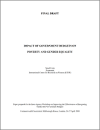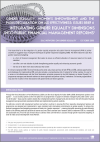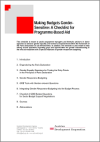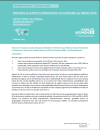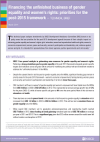Since the start of the COVID-19 pandemic, almost USD 16 trillion has been pumped into the global economy, and governments are now rolling out second and third ph
FOUND 11
In this paper, Simel Esim (2000) focuses on expenditure and revenue instruments of fiscal policy as strategic entry points for engendering macroeconomics. The paper also includes a discussion of the potential implications of monetary policy and overall fiscal stance on poverty and gender equality.
This Issues Brief published by the DAC NETWORK on Gender Equality in October 2010 is on the integration of a gender equality perspective into public financial management (PFM) in partner countries. It suggests ways of using the techniques of gender-responsive budgeting (GRB).
This checklist is meant to assist programme managers and thematic advisors in donor agencies to advance gender equality and women's empowerment within the framework of the Paris Declaration on aid effectiveness.
UN Women Policy Brief: Reforma Impostu Rendimentu no Konsumu ba Timor-Leste
This note provides an overview of existing gender equality markers and reviews issues relating to the tracking and monitoring of investments related to gender equality and women’s empowerment.
This technical paper analyses investments by OECD Development Assistance Committee (DAC) donors in six policy areas that are priorities for the post-2015 development agenda because of their catalytic impact on achieving gender equality and women’s rights: girls’ education; sexual and reproductive he
This toolkit follows the transfer of public funds from central to local governments until they reach users such as schools and clinics. It explains how a public expenditure tracking system operates and how it can benefit marginalized groups.
The guidance note sets out commom principles and standards for gender equality markers systems that track and report on allocations and expenditures for gender equality and women's empowerment.

